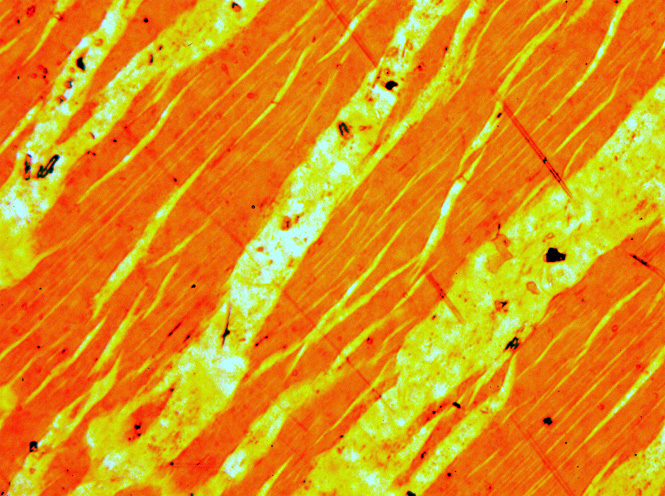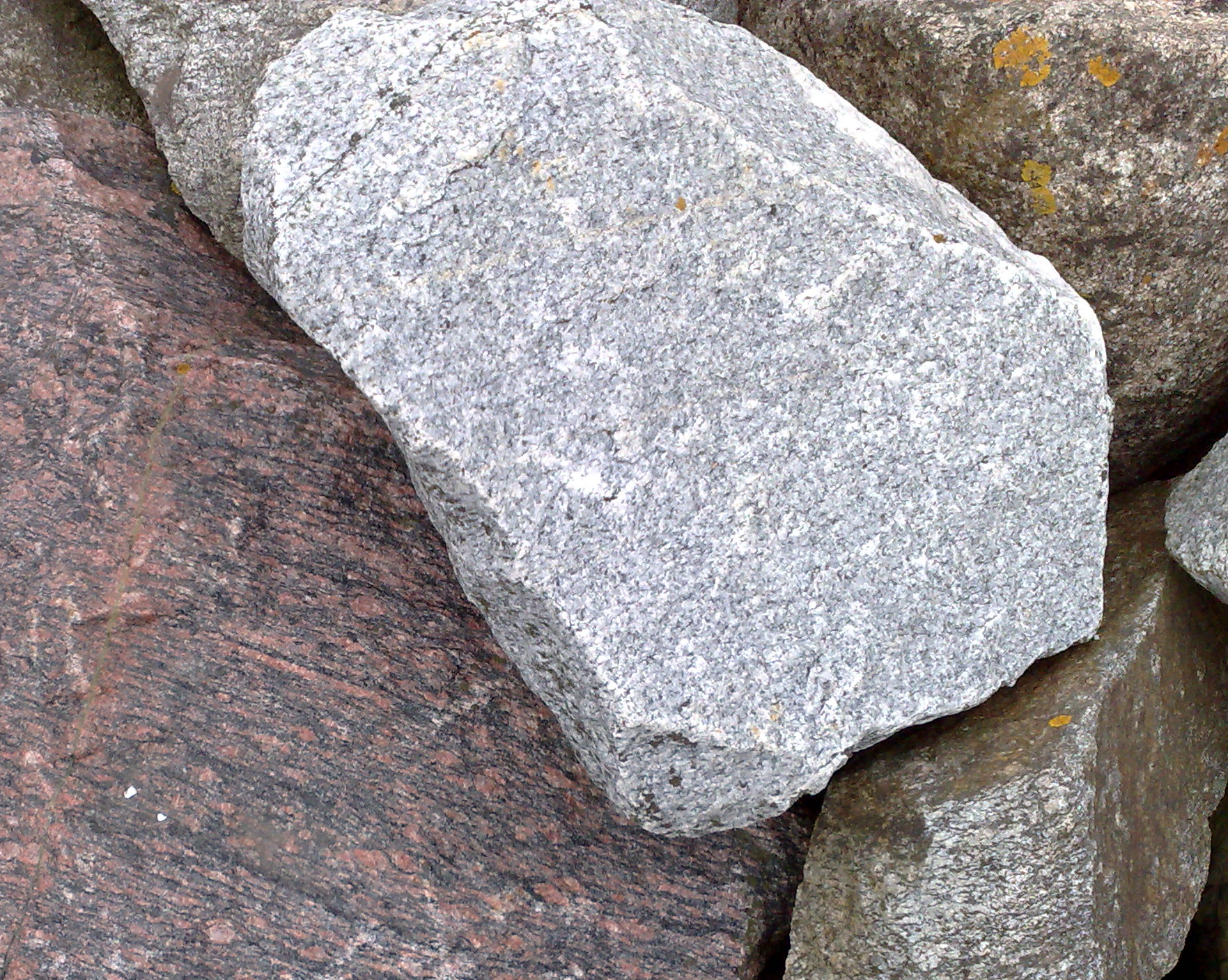|
Enderbite
In geology, enderbite is an igneous rock of the charnockite series, consisting essentially of quartz, antiperthite (or perthite), orthopyroxene (usually hypersthene) and magnetite, and is equivalent to an orthopyroxene bearing tonalite. It is named for its occurrence in Enderby Land, Antarctica Antarctica () is Earth's southernmost and least-populated continent. Situated almost entirely south of the Antarctic Circle and surrounded by the Southern Ocean, it contains the geographic South Pole. Antarctica is the fifth-largest contine .... References * ''Classification of igneous rocks'', 2nd edition, 2002, by R.W. Le Maitre et al. Plutonic rocks {{petrology-stub ... [...More Info...] [...Related Items...] OR: [Wikipedia] [Google] [Baidu] |
Geology
Geology () is a branch of natural science concerned with Earth and other astronomical objects, the features or rocks of which it is composed, and the processes by which they change over time. Modern geology significantly overlaps all other Earth sciences, including hydrology, and so is treated as one major aspect of integrated Earth system science and planetary science. Geology describes the structure of the Earth on and beneath its surface, and the processes that have shaped that structure. It also provides tools to determine the relative and absolute ages of rocks found in a given location, and also to describe the histories of those rocks. By combining these tools, geologists are able to chronicle the geological history of the Earth as a whole, and also to demonstrate the age of the Earth. Geology provides the primary evidence for plate tectonics, the evolutionary history of life, and the Earth's past climates. Geologists broadly study the properties and processes of E ... [...More Info...] [...Related Items...] OR: [Wikipedia] [Google] [Baidu] |
Igneous Rock
Igneous rock (derived from the Latin word ''ignis'' meaning fire), or magmatic rock, is one of the three main The three types of rocks, rock types, the others being Sedimentary rock, sedimentary and metamorphic rock, metamorphic. Igneous rock is formed through the cooling and solidification of magma or lava. The magma can be derived from Partial melting, partial melts of existing rocks in either a Terrestrial planet, planet's mantle (geology), mantle or crust (geology), crust. Typically, the melting is caused by one or more of three processes: an increase in temperature, a decrease in pressure, or a change in composition. Solidification into rock occurs either below the surface as intrusive rocks or on the surface as extrusive (geology), extrusive rocks. Igneous rock may form with crystallization to form granular, crystalline rocks, or without crystallization to form Volcanic glass, natural glasses. Igneous rocks occur in a wide range of geological settings: shields, platforms ... [...More Info...] [...Related Items...] OR: [Wikipedia] [Google] [Baidu] |
Charnockite
Charnockite () is any orthopyroxene-bearing quartz-feldspar rock formed at high temperature and pressure, commonly found in granulite facies metamorphic regions, ''sensu stricto'' as an endmember of the charnockite series. Charnockite series The ''charnockite suite'' or ''series'' is a particularly widespread form of granofels. Granofels are one of the few non-foliated rocks to form under relatively high temperatures and pressures. This combination is generated only deep in the crust by tectonic forces that operate on a grand scale, so granofels is a product of regional, rather than contact, metamorphism. It is formed mostly from the granite clan of rocks, or occasionally from thoroughly reconstituted clays and shales. It is of wide distribution and great importance in India, Sri Lanka, Madagascar and Africa. It was named by geologist T. H. Holland in 1893 after the tombstone of Job Charnock, in St John's Church in Kolkata, India, which is made of this rock. Composition The c ... [...More Info...] [...Related Items...] OR: [Wikipedia] [Google] [Baidu] |
Quartz
Quartz is a hard, crystalline mineral composed of silica (silicon dioxide). The atoms are linked in a continuous framework of SiO4 silicon-oxygen tetrahedra, with each oxygen being shared between two tetrahedra, giving an overall chemical formula of SiO2. Quartz is the second most abundant mineral in Earth's continental crust, behind feldspar. Quartz exists in two forms, the normal α-quartz and the high-temperature β-quartz, both of which are chiral. The transformation from α-quartz to β-quartz takes place abruptly at . Since the transformation is accompanied by a significant change in volume, it can easily induce microfracturing of ceramics or rocks passing through this temperature threshold. There are many different varieties of quartz, several of which are classified as gemstones. Since antiquity, varieties of quartz have been the most commonly used minerals in the making of jewelry and hardstone carvings, especially in Eurasia. Quartz is the mineral defining the val ... [...More Info...] [...Related Items...] OR: [Wikipedia] [Google] [Baidu] |
Perthite
Perthite is used to describe an intergrowth of two feldspars: a host grain of potassium-rich alkali feldspar (near K-feldspar, KAlSi3O8, in composition) includes exsolved lamellae or irregular intergrowths of sodic alkali feldspar (near albite, NaAlSi3O8, in composition). Typically, the host grain is orthoclase or microcline, and the lamellae are albite. If sodic feldspar is the dominant phase, the result is an antiperthite and where the feldspars are in roughly equal proportions the result is a mesoperthite. The intergrowth forms by exsolution due to cooling of a grain of alkali feldspar with a composition intermediate between K-feldspar and albite. There is complete solid solution between albite and K-feldspar at temperatures near 700 °C and pressures like those within the crust of the Earth, but a miscibility gap is present at lower temperatures. If an alkali feldspar grain with an intermediate composition cools slowly enough, K-rich and more Na-rich feldspar domains separ ... [...More Info...] [...Related Items...] OR: [Wikipedia] [Google] [Baidu] |
Orthopyroxene
The pyroxenes (commonly abbreviated to ''Px'') are a group of important rock-forming inosilicate minerals found in many igneous and metamorphic rocks. Pyroxenes have the general formula , where X represents calcium (Ca), sodium (Na), iron (Fe II) or magnesium (Mg) and more rarely zinc, manganese or lithium, and Y represents ions of smaller size, such as chromium (Cr), aluminium (Al), magnesium (Mg), cobalt (Co), manganese (Mn), scandium (Sc), titanium (Ti), vanadium (V) or even iron (Fe II) or (Fe III). Although aluminium substitutes extensively for silicon in silicates such as feldspars and amphiboles, the substitution occurs only to a limited extent in most pyroxenes. They share a common structure consisting of single chains of silica tetrahedra. Pyroxenes that crystallize in the monoclinic system are known as clinopyroxenes and those that crystallize in the orthorhombic system are known as orthopyroxenes. The name ''pyroxene'' is derived from the Ancient Greek words for 'fire' ( ... [...More Info...] [...Related Items...] OR: [Wikipedia] [Google] [Baidu] |
Hypersthene
Hypersthene is a common rock-forming inosilicate mineral belonging to the group of orthorhombic pyroxenes. Its chemical formula is . It is found in igneous and some metamorphic rocks as well as in stony and iron meteorites. Many references have formally abandoned this term, preferring to categorise this mineral as enstatite or ferrosilite. It forms a solid solution series with the minerals enstatite and ferrosilite, being a mid-way member between the two. Pure enstatite contains no iron, while pure ferrosilite contains no magnesium; hypersthene is the name given to the mineral when a significant amount of both elements are present. Enstatite is stable at atmospheric pressure, but ferrosilite is stable only at elevated pressure, decomposing into quartz and fayalite at atmospheric pressure unless stabilized by magnesium or other impurities. Distinctly developed crystals are rare, the mineral being usually found as foliated masses embedded in the igneous rocks norite and hypersthen ... [...More Info...] [...Related Items...] OR: [Wikipedia] [Google] [Baidu] |
Magnetite
Magnetite is a mineral and one of the main iron ores, with the chemical formula Fe2+Fe3+2O4. It is one of the oxides of iron, and is ferrimagnetic; it is attracted to a magnet and can be magnetized to become a permanent magnet itself. With the exception of extremely rare native iron deposits, it is the most magnetic of all the naturally occurring minerals on Earth. Naturally magnetized pieces of magnetite, called lodestone, will attract small pieces of iron, which is how ancient peoples first discovered the property of magnetism. Magnetite is black or brownish-black with a metallic luster, has a Mohs hardness of 5–6 and leaves a black streak. Small grains of magnetite are very common in igneous and metamorphic rocks. The chemical IUPAC name is iron(II,III) oxide and the common chemical name is ''ferrous-ferric oxide''. Properties In addition to igneous rocks, magnetite also occurs in sedimentary rocks, including banded iron formations and in lake and marine sediments ... [...More Info...] [...Related Items...] OR: [Wikipedia] [Google] [Baidu] |
Tonalite
Tonalite is an igneous, plutonic ( intrusive) rock, of felsic composition, with phaneritic (coarse-grained) texture. Feldspar is present as plagioclase (typically oligoclase or andesine) with alkali feldspar making up less than 10% of the total feldspar content. Quartz (SiO2) is present as more than 20% of the total quartz-alkali feldspar-plagioclase-feldspathoid ( QAPF) content of the rock. Amphiboles and biotite are common accessory minerals. In older references tonalite is sometimes used as a synonym for quartz diorite. However the current IUGS classification defines tonalite as having greater than 20% quartz, while quartz diorite varies its quartz content from 5 to 20%. The name is derived from the type locality of tonalites, adjacent to the Tonale Line, a major structural lineament and mountain pass, Tonale Pass, in the Italian and Austrian Alps. The name was first applied by Gerhard vom Rath in 1864. The term ''adamellite'' was originally applied by A. Cathrein in 1890 ... [...More Info...] [...Related Items...] OR: [Wikipedia] [Google] [Baidu] |
Enderby Land
Enderby Land is a projecting landmass of Antarctica. Its shore extends from Shinnan Glacier at about to William Scoresby Bay at , approximately of the earth's longitude. It was first documented in western and eastern literature in February 1831 by John Biscoe aboard the whaling brig ''Tula'', and named after the Enderby Brothers of London, the ship's owners who encouraged their captains to combine exploration with sealing. Nation state claims Subject to the constraints of the Antarctic Treaty System, the longest-held nation-state claimant rights in the territory is Australia, being a large part of its claimed Australian Antarctic Territory up to various high latitudes towards the South Pole. Features Coastal features include Amundsen Bay, Casey Bay and Cape Monakov. Mountain ranges or sub-ranges being crests above pack ice (escarpments), are the Scott Mountains, the Tula Mountains, and the Napier Mountains. The highest peak is Mount Elkins at Above Ordnance Datum (convent ... [...More Info...] [...Related Items...] OR: [Wikipedia] [Google] [Baidu] |
Antarctica
Antarctica () is Earth's southernmost and least-populated continent. Situated almost entirely south of the Antarctic Circle and surrounded by the Southern Ocean, it contains the geographic South Pole. Antarctica is the fifth-largest continent, being about 40% larger than Europe, and has an area of . Most of Antarctica is covered by the Antarctic ice sheet, with an average thickness of . Antarctica is, on average, the coldest, driest, and windiest of the continents, and it has the highest average elevation. It is mainly a polar desert, with annual precipitation of over along the coast and far less inland. About 70% of the world's freshwater reserves are frozen in Antarctica, which, if melted, would raise global sea levels by almost . Antarctica holds the record for the lowest measured temperature on Earth, . The coastal regions can reach temperatures over in summer. Native species of animals include mites, nematodes, penguins, seals and tardigrades. Where vegetation o ... [...More Info...] [...Related Items...] OR: [Wikipedia] [Google] [Baidu] |








